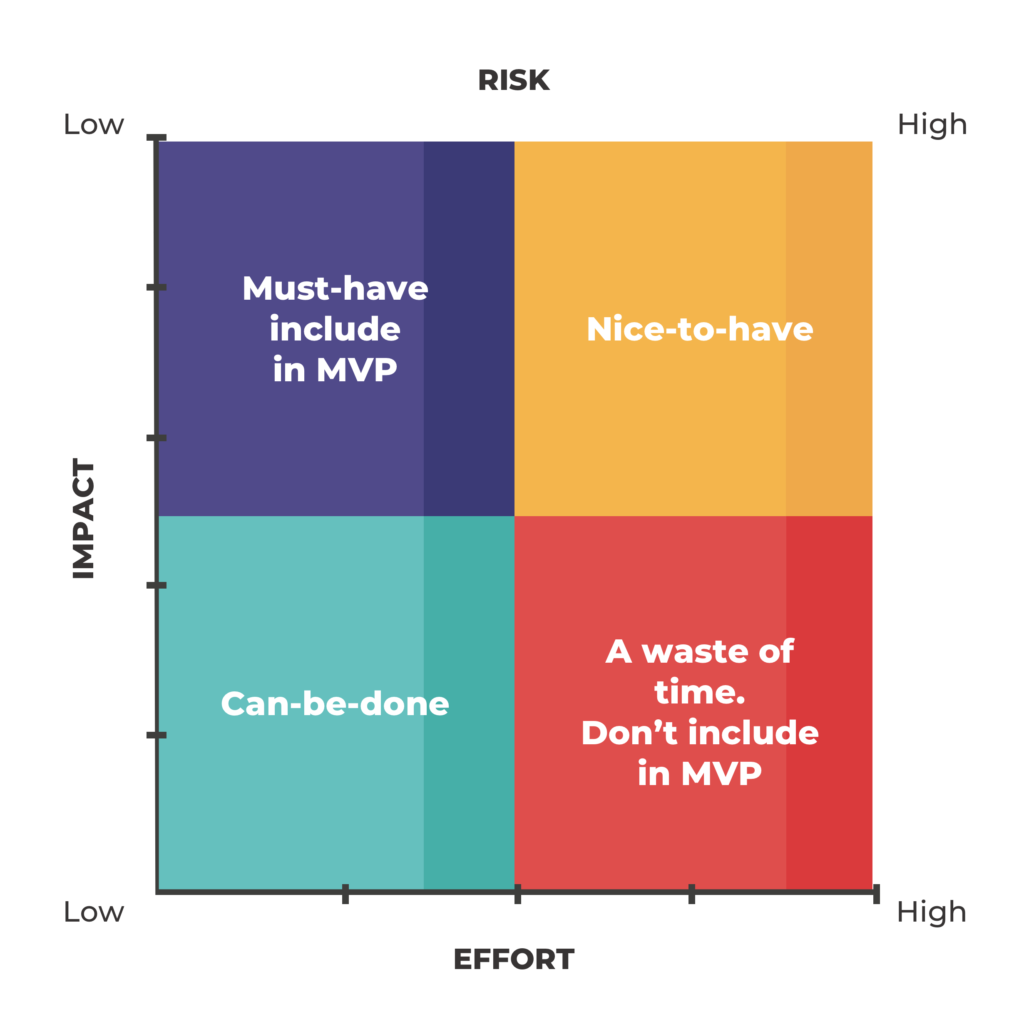Managing multiple projects and priorities simultaneously is a challenging endeavor that demands a unique set of skills and expertise from project managers. It involves navigating through a complex web of tasks, deadlines, resources, and stakeholders while ensuring that each project receives the attention it deserves. This article aims to delve into the art of balancing multiple projects and priorities and equip project managers with effective strategies to achieve success in such demanding situations.
.
Table of Contents
Understanding the Challenge: Multiple Projects
Managing multiple projects and priorities is no easy feat. It brings forth a multitude of challenges, including conflicting priorities, limited resources, and overwhelming workloads. As project managers, we find ourselves navigating through a complex landscape, striving to ensure that each project receives the attention and resources it deserves. In this section, we will dive into the intricacies of this challenge and shed light on the complexities and pressures that arise when managing multiple projects simultaneously.

One of the key hurdles in managing multiple projects is the presence of conflicting priorities. With different projects vying for attention and resources, it becomes essential to establish a clear hierarchy of priorities. By delving into effective project prioritization techniques, we can discern the relative importance and urgency of each project. This allows us to make informed decisions and allocate our resources strategically, ensuring that the most critical projects receive the necessary focus and attention.
Additionally, resource constraints often emerge as a significant challenge in managing multiple projects. Limited availability of skilled team members, equipment, or budget can hinder the progress and success of each project. It is imperative to identify resource constraints early on and employ creative resource allocation strategies. By optimizing resource utilization, exploring collaboration opportunities, or seeking external support when needed, we can mitigate the impact of resource constraints and ensure that each project is adequately supported.
Prioritization Techniques: Multiple Projects
When it comes to managing multiple projects and priorities, having effective prioritization techniques in your toolkit is essential. One such technique is the renowned Eisenhower Matrix, which helps you categorize tasks based on their urgency and importance. By dividing tasks into four quadrants – “Urgent and Important,” “Important but Not Urgent,” “Urgent but Not Important,” and “Not Urgent and Not Important” – you can gain a clearer understanding of where your focus should lie. This method enables you to prioritize tasks that have a significant impact on project success and address urgent matters promptly.

Another valuable prioritization technique is the ABC analysis. By assigning priorities to tasks using the letters A, B, and C, you can differentiate between tasks that require immediate attention, those that can be completed in a more flexible timeframe, and those that are lower in priority. This approach allows you to allocate your time and resources wisely, ensuring that you devote sufficient attention to tasks with high strategic importance while managing lower-priority tasks efficiently.
Both the Eisenhower Matrix and ABC analysis provide practical frameworks for assessing the strategic importance and impact of each project or task. They empower you to make informed decisions about where to direct your efforts and resources, enabling you to prioritize effectively and maximize your productivity.
By implementing these prioritization techniques, you can gain clarity amidst the chaos of multiple projects and priorities. They offer a structured approach to decision-making, ensuring that you invest your time and energy in tasks that align with the overall project objectives and yield the greatest impact. Prioritization techniques like the Eisenhower Matrix and ABC analysis are valuable tools in your arsenal as a project manager, helping you navigate through complex project landscapes and make informed choices that drive success.
Resource Allocation and Capacity Planning: Multiple Projects
Resource allocation and capacity planning are critical aspects of managing multiple projects and priorities effectively. These processes involve strategically assigning resources and determining the capacity needed to execute projects successfully. Let’s explore the importance of resource allocation and capacity planning and how they contribute to project success.
Resource allocation refers to the distribution of available resources, such as human resources, budget, equipment, and materials, among various projects. It requires careful consideration of project requirements, resource availability, and the skills and expertise of team members. By optimizing resource allocation, project managers can ensure that each project has the necessary resources to progress smoothly.
One key aspect of resource allocation is assessing resource availability. Project managers must have a comprehensive understanding of the skills, availability, and workload of their team members. By conducting a thorough analysis of resource availability, they can make informed decisions about task assignments and project timelines. This helps prevent overburdening team members and ensures that resources are utilized efficiently.
Capacity planning, on the other hand, involves determining the overall capacity needed to execute multiple projects simultaneously. It takes into account the organization’s resources, including human resources, technology infrastructure, and financial capabilities. By assessing the capacity of the organization, project managers can identify potential resource gaps or constraints early on and take proactive measures to address them.
Effective capacity planning also involves forecasting future resource requirements based on project timelines, deliverables, and strategic goals. By anticipating resource needs, project managers can allocate resources in a way that ensures smooth project execution without compromising on quality or timelines.

Additionally, capacity planning helps project managers balance the workload across the team. It allows them to distribute tasks evenly, avoiding resource bottlenecks or overloading certain team members. This promotes a healthy work environment, enhances team collaboration, and prevents burnout.
To facilitate resource allocation and capacity planning, project managers can utilize project management software and tools. These tools provide visibility into resource availability, workload distribution, and project dependencies. They enable project managers to make informed decisions, track resource utilization, and adjust allocations as needed.
By effectively allocating resources and engaging in capacity planning, project managers can optimize project outcomes. They can ensure that the right resources are available at the right time, avoid resource conflicts, and enhance productivity. Ultimately, resource allocation and capacity planning contribute to efficient project execution, increased stakeholder satisfaction, and the successful achievement of project goals.
Effective Project Planning and Scheduling:
Effective project planning and scheduling play a crucial role in managing multiple projects and priorities simultaneously. These processes involve creating a roadmap for project execution, setting realistic timelines, and ensuring that tasks are organized and tracked efficiently. Let’s delve into the importance of effective project planning and scheduling and how they contribute to successful project management.
Project planning involves defining project objectives, identifying deliverables, and outlining the activities required to achieve those objectives. It is essential to have a clear understanding of project requirements, stakeholders’ expectations, and available resources during the planning phase. By conducting thorough upfront planning, project managers can establish a solid foundation for successful project execution.
One key aspect of project planning is breaking down the project into manageable tasks and establishing dependencies between them. This helps in identifying critical path activities and understanding the sequence in which tasks need to be executed. By defining task dependencies, project managers can ensure that projects progress smoothly and avoid bottlenecks or delays.
Creating a realistic Multiple Projectsschedule is another vital component of effective project planning. Project managers should consider various factors such as task duration, resource availability, and dependencies when developing the project schedule. Setting achievable deadlines and milestones helps in managing stakeholder expectations and keeping the project on track.
Regularly reviewing and updating the project plan is crucial to adapt to changes and ensure project success. Project managers should monitor progress, track tasks, and assess any deviations from the planned schedule. By actively managing the project plan, they can identify potential risks or issues early on and take corrective actions to mitigate their impact.

Scheduling techniques such as Gantt charts, critical path analysis, and resource leveling can greatly assist in project scheduling and monitoring. Gantt charts provide a visual representation of project tasks, their durations, and dependencies, allowing project managers to track progress and manage timelines effectively. Critical path analysis helps in identifying the longest sequence of dependent tasks, enabling project managers to focus on activities that are critical to the project’s overall timeline. Resource leveling ensures that resources are allocated optimally across tasks, preventing resource conflicts and optimizing resource utilization.
Effective project planning and scheduling enable project managers to have a clear roadmap, ensure efficient resource allocation, and manage stakeholder expectations. By having a well-defined plan and realistic schedule, project managers can keep projects on track, deliver on time, and within budget. They can proactively identify and address risks or issues, maintain team productivity, and foster a sense of confidence among stakeholders.
Communication and Stakeholder Management:

Communication and stakeholder management are integral aspects of managing multiple projects and priorities simultaneously. Effective communication ensures that project teams, stakeholders, and clients are aligned, informed, and engaged throughout the project lifecycle. It involves establishing clear lines of communication, actively listening to stakeholders’ needs and concerns, and providing timely and transparent project updates. By fostering open and effective communication channels, project managers can manage stakeholder expectations, build trust, and maintain strong relationships. Regular and meaningful communication promotes collaboration, mitigates risks, and enables project teams to address issues promptly, ultimately leading to successful project outcomes.
Delegation and Team Empowerment:

Delegation and team empowerment are crucial components of managing multiple projects and priorities simultaneously. Project managers cannot handle every task on their own, and effective delegation is key to distributing the workload and maximizing team efficiency. Delegation involves assigning responsibilities to team members based on their strengths, skills, and expertise, while ensuring clear communication of expectations and desired outcomes. By empowering team members with decision-making authority and providing them with the necessary support and resources, project managers foster a sense of ownership and accountability. Delegation and team empowerment not only lighten the project manager’s workload but also promote collaboration, boost team morale, and unleash the full potential of each team member. It allows project managers to focus on high-level tasks, while team members are empowered to take ownership of their assigned responsibilities and contribute to the success of the projects..
Time Management and Productivity Techniques:
Time management and productivity techniques are essential for managing multiple projects and priorities efficiently. Effectively managing your time allows you to maximize productivity, meet deadlines, and maintain a healthy work-life balance. Here are some key techniques to help you manage your time and boost productivity:

- Prioritize tasks: Start by identifying the most important and urgent tasks. Focus on high-priority activities that align with project goals and have significant impact. This ensures that you allocate your time and energy to tasks that truly matter.
- Set clear goals and deadlines: Establish clear goals for each project and break them down into actionable tasks. Assign realistic deadlines to each task to maintain a sense of urgency and track progress effectively.
- Time blocking: Allocate specific time blocks for different activities or projects. Dedicate uninterrupted time to focus on important tasks and minimize distractions. This technique helps you maintain focus and improves productivity.
- Delegate tasks: Delegate tasks that can be handled by others, enabling you to free up time for more critical responsibilities. Delegating empowers team members and enhances overall efficiency.
- Avoid multitasking: While it may seem tempting, multitasking can lead to decreased productivity and lower quality work. Instead, focus on one task at a time, complete it, and then move on to the next.
- Utilize technology tools: Leverage project management software, productivity apps, and time-tracking tools to streamline workflows, organize tasks, and monitor progress. These tools can enhance efficiency and provide insights into time allocation and resource utilization.
- Take regular breaks: Schedule short breaks to recharge and avoid burnout. Stepping away from work for a few minutes can refresh your mind, increase focus, and improve overall productivity.
- Practice effective communication: Clear and concise communication is vital for managing time effectively. Communicate project expectations, deadlines, and progress updates with stakeholders and team members to ensure everyone is on the same page.
- Avoid procrastination: Procrastination can hinder productivity and create unnecessary stress. Break down tasks into smaller, manageable steps and start working on them immediately.
- Continuously evaluate and adjust: Regularly assess your time management techniques and productivity levels. Identify areas for improvement and make necessary adjustments to optimize your workflow and achieve better results.
By implementing these time management and productivity techniques, you can effectively manage your time, increase productivity, and achieve successful outcomes across multiple projects and priorities. Remember, finding a balance between work and personal life is also crucial for overall well-being and sustained productivity.
Flexibility and Adaptability:
Flexibility and adaptability are vital attributes for managing multiple projects and priorities effectively. In today’s fast-paced and ever-changing business landscape, project managers need to be able to adjust their plans and approaches to meet evolving demands. By being flexible, project managers can adapt to unforeseen challenges, changes in requirements, and shifting priorities, ensuring that projects stay on track and deliver successful outcomes.
Flexibility allows project managers to respond quickly and effectively to changes. It enables them to reassess project goals, reallocate resources, and revise timelines when necessary. By embracing a flexible mindset, project managers can identify alternative solutions, think creatively, and make informed decisions to address new circumstances. This ability to adapt and make timely adjustments helps mitigate risks and keeps projects aligned with the evolving needs of stakeholders and the business.
Moreover, being adaptable enables project managers to optimize resource allocation. As multiple projects and priorities vie for limited resources, project managers must have the agility to distribute resources effectively. They need to assess resource availability, identify potential bottlenecks, and adjust allocations to ensure that the right resources are allocated to the right tasks at the right time. This adaptability ensures that projects receive the necessary support and resources, maximizing efficiency and productivity.
In summary, flexibility and adaptability are indispensable qualities for managing multiple projects and priorities. By embracing flexibility, project managers can navigate uncertainties, respond to changes, and make timely adjustments to keep projects on track. Adaptability allows them to optimize resource allocation, mitigate risks, and deliver successful outcomes. These qualities empower project managers to thrive in dynamic environments and ensure the success of their projects.
Monitoring and Tracking Progress:
Monitoring and tracking progress is a vital aspect of managing multiple projects and priorities effectively. It involves regularly assessing project status, identifying potential issues, and making necessary adjustments to ensure projects stay on track. By actively monitoring progress, project managers can maintain control, stay informed, and take proactive measures to achieve project objectives.
One key benefit of monitoring progress is the ability to identify deviations from the planned timeline or scope. By regularly reviewing project milestones and deliverables, project managers can track progress against set targets. This enables them to identify any delays or variances early on, allowing for timely intervention and corrective actions. By addressing issues promptly, project managers can minimize the impact on overall project timelines and mitigate risks.

Tracking progress also provides project managers with valuable insights into resource utilization and workload distribution. By monitoring the allocation and availability of resources, project managers can identify potential resource bottlenecks or imbalances. This information enables them to reallocate resources, redistribute workloads, or seek additional resources to ensure projects are adequately supported and progress smoothly.
Moreover, Multiple Projects monitoring progress allows project managers to maintain effective communication with stakeholders. Regular updates on project status, milestones achieved, and upcoming activities help keep stakeholders informed and engaged. This transparency fosters trust, manages expectations, and reduces the likelihood of misunderstandings or conflicts. Effective communication also enables project managers to address any concerns or feedback from stakeholders promptly, ensuring alignment and satisfaction.
In summary, monitoring and tracking progress are essential for managing multiple projects and priorities. By actively monitoring progress, project managers can identify deviations, address issues promptly, and make informed decisions to keep projects on track. This process enables them to optimize resource utilization, manage stakeholder expectations, and ensure successful project outcomes. Through effective monitoring and tracking, project managers can maintain control, mitigate risks, and achieve desired project objectives.
Managing Stakeholder Expectations:
Managing stakeholder expectations is a crucial aspect of managing multiple projects and priorities. Stakeholders play a vital role in project success, and their satisfaction directly impacts the overall project outcomes. By effectively managing stakeholder expectations, project managers can foster positive relationships, enhance communication, and ensure alignment between project goals and stakeholder needs.
One key element of managing stakeholder expectations is clear and open communication. Project managers must establish regular communication channels with stakeholders, providing them with timely updates on project progress, milestones, and any changes or challenges encountered. By keeping stakeholders informed and involved, project managers can prevent misunderstandings, manage expectations, and address any concerns or issues promptly.

Another important aspect is actively listening to stakeholders and understanding their needs and priorities. Project managers should engage in meaningful conversations, seek feedback, and incorporate stakeholder perspectives into decision-making processes. By actively involving stakeholders, project managers can gain their support, foster collaboration, and build trust.
Additionally, setting realistic expectations and aligning them with project goals is crucial. Project managers must communicate project constraints, timelines, and potential risks or limitations to stakeholders upfront. By setting clear expectations and managing stakeholders’ understanding of project complexities, project managers can avoid unrealistic demands or scope creep and ensure that stakeholders have a realistic understanding of what can be achieved within project constraints.
In summary, managing stakeholder expectations is a critical aspect of successful project management. By fostering open communication, actively listening to stakeholders, and setting realistic expectations, project managers can establish strong relationships, maintain stakeholder satisfaction, and ensure project success. By proactively managing stakeholder expectations throughout the project lifecycle, project managers can navigate challenges, mitigate risks, and achieve desired project outcomes while building strong stakeholder trust and support.
Mitigating Project Risks:
Mitigating Multiple Projects project risks is a crucial aspect of managing multiple projects and priorities effectively. Risks are inherent in any project, and their successful identification, assessment, and mitigation are key to minimizing their potential impact on project outcomes. By actively mitigating project risks, project managers can enhance project success rates and ensure the smooth execution of multiple projects.
One essential step in risk mitigation is the identification and assessment of potential risks. Project managers must proactively identify risks by conducting thorough risk assessments and analyzing project dependencies, uncertainties, and external factors that could impact project progress. By understanding the risks specific to each project, project managers can develop appropriate strategies to mitigate them effectively.
Once risks are identified, project managers can implement risk mitigation strategies to reduce their likelihood or impact. This may involve developing contingency plans, establishing alternative approaches, or implementing preventive measures. By taking proactive action, project managers can minimize the chances of risks materializing or lessen their potential negative consequences.

Effective communication and collaboration are also essential in mitigating project risks. Project managers should engage stakeholders, team members, and subject matter experts to gather insights and perspectives on potential risks. By fostering an environment of open communication, project managers can leverage collective knowledge and expertise to identify and address risks more effectively.
Regular monitoring and reassessment of project risks are also critical. Project managers should continuously monitor the project’s progress, update risk assessments, and identify any new risks that may arise. By staying vigilant and responsive, project managers can adapt their risk mitigation strategies and address emerging risks promptly.
Furthermore, establishing a risk management plan is crucial to ensure consistency and structure in the risk mitigation process. This plan outlines the approach, responsibilities, and protocols for identifying, assessing, and mitigating risks. By having a clear roadmap, project managers can navigate the risk mitigation process systematically and effectively.
In summary, mitigating Multiple Projects project risks is vital for managing multiple projects and priorities successfully. By identifying and assessing risks, implementing risk mitigation strategies, fostering communication and collaboration, and continuously monitoring risks, project managers can minimize potential disruptions and enhance project outcomes. By proactively managing risks, project managers can ensure the successful execution of multiple projects and safeguard project success.



